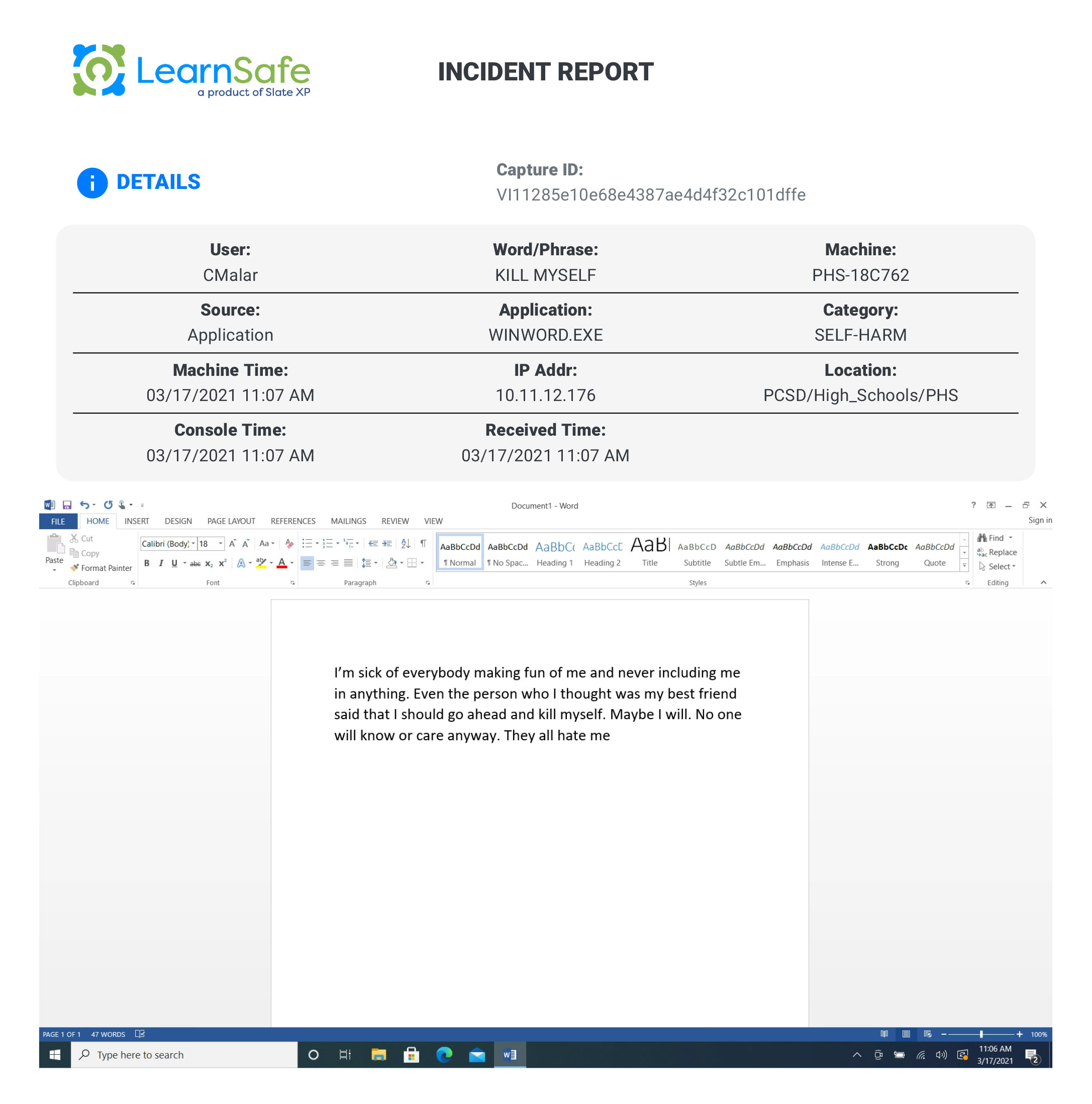How It Works
LearnSafe helps identify and address the warning signs in 4 easy steps
1. Define Acceptable Use
 The first step in the LearnSafe process is to establish clear expectations for productive computer use and strong digital citizenship in your school community. Our experienced staff will review your existing policies and guide the development of strong guidelines for acceptable and appropriate use of technology. Also, our experts will help you find ways to reinforce these expectations every time a user logs into a school computer.
The first step in the LearnSafe process is to establish clear expectations for productive computer use and strong digital citizenship in your school community. Our experienced staff will review your existing policies and guide the development of strong guidelines for acceptable and appropriate use of technology. Also, our experts will help you find ways to reinforce these expectations every time a user logs into a school computer.


2. Identify At-Risk Behavior
 LearnSafe automatically analyzes school computer screens, scanning content that users view and type. In this way, LearnSafe helps you gather information about digital behavior on:
LearnSafe automatically analyzes school computer screens, scanning content that users view and type. In this way, LearnSafe helps you gather information about digital behavior on:Online Content, such as:
- Social media
- GSuite
- Chat rooms
- Instant messaging
- Games
- E-mail (drafts included)
- Web browsers
- Proxy by-pass attempts and other incidents of hacking
- Microsoft Office Suite
- Keynote and Pages
- Offline e-mail drafts
- Thumb drives
- Downloads
- File names
LearnSafe’s database, vetted by subject-matter experts, is pre-loaded with keywords and phrases in categories that indicate threats, violence, self-harm, and other at-risk behaviors. The database is customizable, allowing you to monitor and respond in real time to issues as they appear in your school.
The database is pre-populated to capture language indicative of the following dangers:
- Bullying
- Racism
- Pornography
- Predatory Grooming
- Weapons
- Suicide & Self-Harm
- Threats
- Profane Language
3. Review Actionable Information
 Sorted by severity level, LearnSafe provides trained administrators with easy-to-use alerts and reports. Reports are prioritized and sorted by severity level, saving administrators more of the precious time they need to spend with students. Screen captures are easily reviewed then discarded or saved. Along with our training program, this helps schools maintain privacy and to follow the law when it comes inappropriate images.
Sorted by severity level, LearnSafe provides trained administrators with easy-to-use alerts and reports. Reports are prioritized and sorted by severity level, saving administrators more of the precious time they need to spend with students. Screen captures are easily reviewed then discarded or saved. Along with our training program, this helps schools maintain privacy and to follow the law when it comes inappropriate images.

4. Manage Behavior
 From supporting a victim of bullying to counseling a student who used a computer inappropriately, LearnSafe helps you ensure the safety and security of your school community. With 24/7 monitoring, real-time alerts and screenshots, LearnSafe provides actionable data that helps schools quickly and effectively address and modify behavior, improving the culture of your school in the process. LearnSafe also gives you the ability to track trends of student social and emotional wellness over time, empowering schools to integrate responses to online activity into behavior support systems and to monitor the long-range effectiveness of these strategies.
From supporting a victim of bullying to counseling a student who used a computer inappropriately, LearnSafe helps you ensure the safety and security of your school community. With 24/7 monitoring, real-time alerts and screenshots, LearnSafe provides actionable data that helps schools quickly and effectively address and modify behavior, improving the culture of your school in the process. LearnSafe also gives you the ability to track trends of student social and emotional wellness over time, empowering schools to integrate responses to online activity into behavior support systems and to monitor the long-range effectiveness of these strategies.
